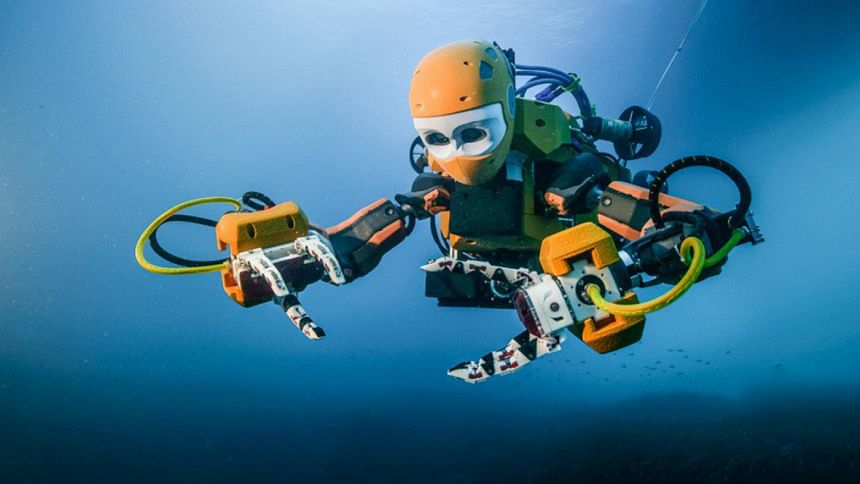Scuba diving humanoid robot uncovers treasure from Louis XIV's wrecked ship

A human-like robot scuba dove and discovered archaeological treasure in a ship that sank off the coast of Toulon, France in 1664, reports Business Insider.
Created by researchers at Stanford University, the robot named OceanOne found a vase in a ship that belonged to King Louis XIV, according to a press release. It was successfully transported to the surface, where it was held by a human for the first time in hundreds of years.
OceanOne was created by a Stanford team led by Oussama Khatib, a professor of computer science.
The robot was originally created to study coral reefs in the Red Sea, where it's too dangerous for humans to dive.
Because robotic submarines don't have the skills and finesse of human divers and divers can't reach certain ocean depths, there was a need to create OceanOne.
OceanOne successfully reached the Sun King's ship, La Lune, which is about 330 feet below the surface. No human has touched the ship or its contents since it sank in 1664.
Khatib controlled OceanOne remotely while sitting in a boat and spotted the vase. The robot was able to delicately retrieve it and bring it up to the surface.
OceanOne is five-feet long and has stereoscopic vision that shows the pilot, in this case Khatib, exactly what it sees.

It also has two fully articulated arms, eight multi-directional thrusters so it can swim, and hands equipped with sensors that relay vibrations back to the pilot so he or she can remotely feel the object the robot is grasping.
OceanOne also runs on artificial intelligence so it is able to pick up objects without squeezing them too tightly.
"You can feel exactly what the robot is doing," Khatib wrote in the press release. "It's almost like you are there; with the sense of touch you create a new dimension of perception."
OceanOne's success could open new doors for ocean exploration in areas too dangerous for humans to reach.
Source: Business Insider

 For all latest news, follow The Daily Star's Google News channel.
For all latest news, follow The Daily Star's Google News channel. 








Comments